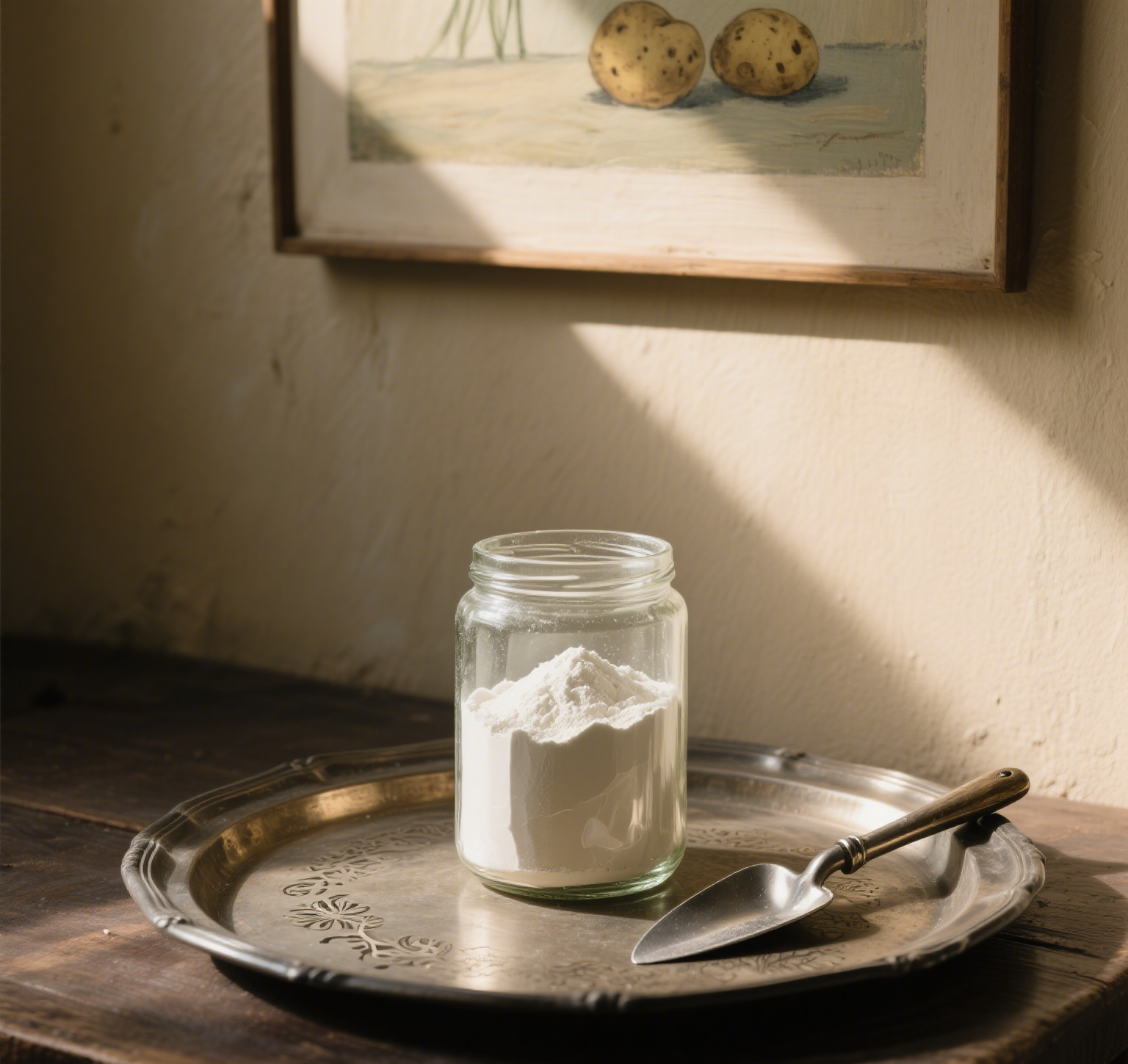The Spud-tacular Truth
Potato starch – that mysterious white powder hiding in your pantry that’s neither flour nor baby powder. Is it your kitchen’s secret weapon or a nutritional villain in disguise? Let’s dig up the truth (pun intended) about this humble tuber derivative.
What Exactly Is Potato Starch?
Potato starch is like the James Bond of the starch world – extracted through a sophisticated process that leaves only the pure carbohydrate essence of potatoes. Unlike potato flour (its bulkier cousin), potato starch is the refined result of crushing potatoes, removing fibers and proteins, then drying the remaining starch. The outcome? A silky, neutral-tasting powder that’s gluten-free and packed with culinary superpowers.
The Good: Why Potato Starch Deserves a Spot in Your Kitchen
- The Crisp Whisperer: Want fried chicken that crackles like autumn leaves? Potato starch is your golden ticket. It creates an impossibly crisp crust that puts regular flour to shame. As chef Jacques Pépin once joked, “If crispiness was a religion, potato starch would be its holy water.”
- The Sauce Savior: Ever experienced the heartbreak of lumpy gravy? Potato starch dissolves more easily than cornstarch and creates glossy, velvety sauces without the “gluey” texture. It’s like Spanx for your sauces – providing structure without compromising elegance.
- The Gluten-Free Guardian: For those avoiding gluten, potato starch is a pantry knight in shining armor. It’s naturally gluten-free and works beautifully in baked goods when combined with other flours.
- The Digestive Diplomat: Resistant starch in potato starch acts like dietary fiber, feeding your gut’s good bacteria. As nutritionist Dr. Sarah Berry puts it, “Your microbiome will throw a party when potato starch arrives.”
The Not-So-Good: When Potato Starch Loses Its Shine
- The Carb Culprit: With about 100 calories and 25g carbs per quarter-cup, potato starch is essentially pure carbohydrate. As one dietitian quipped, “It’s not a vegetable anymore – it’s carbohydrate in witness protection.”
- The Blood Sugar Bully: Potato starch has a high glycemic index (about 95), meaning it can cause rapid blood sugar spikes. Diabetics should treat it like a chatty neighbor – enjoyable in small doses but best not indulged too often.
- The Nutrient Ninja (That Disappeared): While potatoes boast vitamin C and potassium, their starch counterpart leaves most nutrients behind in the extraction process. You’re basically getting the potato‘s skeleton without its flesh.
How to Use Potato Starch Like a Pro
- Substitution Secret: Replace cornstarch 1:1 in recipes, but remember – potato starch thickens at lower temperatures and gives clearer results.
- Baking Boost: Add 1-2 tbsp per cup of gluten-free flour to improve texture. Your muffins will never know they’re missing gluten.
- Crispy Hack: Mix 50/50 with rice flour for the ultimate tempura batter. Your veggies will crunch like they’re auditioning for a snack commercial.
The Verdict: Friend or Foe?
Like most ingredients, potato starch isn’t inherently good or bad – it’s all about how you use it. In the words of culinary scientist Harold McGee, “Starch is neither hero nor villain, but a tool waiting for the right craftsman.” For occasional thickening, gluten-free baking, or achieving that perfect crisp? Absolutely yes. As a daily supplement or major diet component? Probably not.
So go ahead – give that bag of potato starch in your cupboard a second look. Just remember: great power comes with great responsibility (and possibly the crispiest onion rings of your life).
